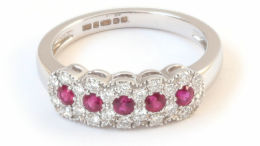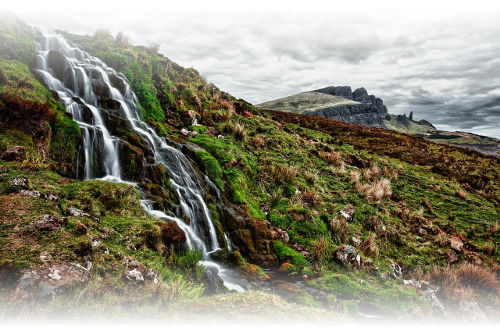First discovered in 1892, Cubic Zirconia is a synthetic gemstone which bears close visual resemblance to diamonds. Though it does exist in natural forms, it is the synthetic one that is most commonly used in jewellery creation as the natural CZ is far too rare. Often, it can be used to simulate more valuable gemstones such as diamonds, sapphires, amethysts, and many others.
It is often used in jewellery as a more affordable alternative to rare and valuable gemstones - as it is a synthetic gemstone, it is easier and more affordable to acquire.
Characteristics of CZ
The cubic zirconia is a very dense stone, even more so than a diamond, and is considered to be a relatively hard substance. This, in turn, makes it brittle. Its melting point is considered to be very high, which created the need to use specific methods in order to synthesize this stone. While not indistinguishable from a diamond, its visual properties are close enough for it to be considered a very good stone to simulate the more valuable gemstones. In contrast to diamonds, which are excellent thermal conductors, CZ is a thermal insulator. In addition, while colourless diamonds are a rarity, Cubic Zirconia can be made completely colourless. This allows CZ to match the highest diamond color grade: "D".
Of course, it does not have to be colourless either. The stone can be coloured, to bring about colours such as green, yellow, red, blue, purple, and pink. In fact, it is possible to create multicoloured CZ as well, which makes it a very versatile stone when it comes to simulating valuable gemstones.

Production
Interestingly, the production of Cubic Zirconia appears to be done primarily using the skull-crucible method which was designed and perfected in Russia. Unlike other crucibles, this particular one is formed during the heating process by the colder outer layer of the stone's material. This is because other methods, using traditional crucibles, proved to be ineffective: CZ's high melting point meant that not even platinum crucibles were able to withstand the heat required for the stone to take form. The skull-crucible method works by heating the center part of the cubic zirconia volume, so that a colder outer layer remains and itself forms a crucible.
The colouring
Colouring the Cubic Zirconia is done during the production process, by adding appropriate elements into the cubic zirconia volume before it is formed into a gemstone. Depending on the element used, it is possible to obtain different colours in different intensities. For example, by adding neodymium the CZ can be made into a purple stone, resembling an amethyst. Whereas by adding cerium, the resulting stone can be anything from yellow to red which makes it possible to simulate a ruby, or a topaz.
All in all, thanks to its less expensive nature than the gemstones CZ can simulate, the synthetic stone can be used in new ways more easily to experiment and find new ways to incorporate it into jewellery. Now that you know a few things about cubic zirconia, you may like to check out our selection of CZ jewellery - chances are, we've got something you'll like!









